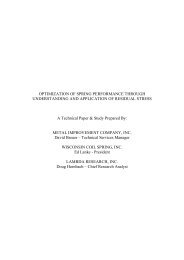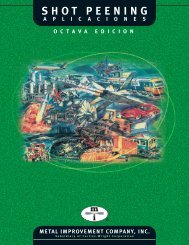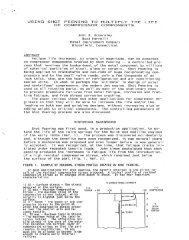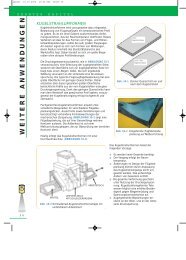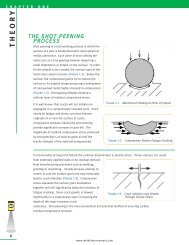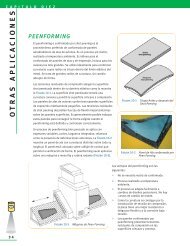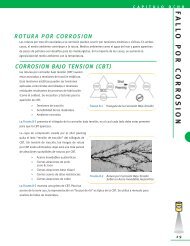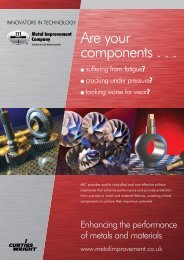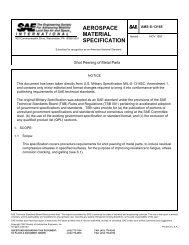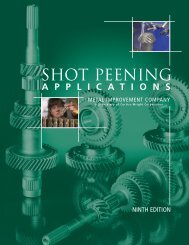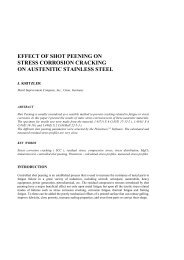Relaxation of Shot Peening Induced Residual Stresses in Ti-6Al-4V ...
Relaxation of Shot Peening Induced Residual Stresses in Ti-6Al-4V ...
Relaxation of Shot Peening Induced Residual Stresses in Ti-6Al-4V ...
Create successful ePaper yourself
Turn your PDF publications into a flip-book with our unique Google optimized e-Paper software.
captured by the current experiments. As discussed earlier <strong>in</strong> section 2.1, it is expected that the impact <strong>of</strong> longer-<br />
term (creep driven) redistribution is smaller than the effects <strong>of</strong> shorter-term mechanisms.<br />
Optimally, future work would <strong>in</strong>clude longer-term exposures as well as mean loads, s<strong>in</strong>ce both <strong>of</strong> these<br />
factors will be present <strong>in</strong> any turb<strong>in</strong>e eng<strong>in</strong>e application.<br />
3.3 Life Predictions<br />
Predictions for propagation life for the basel<strong>in</strong>e unpeened, average 6-8A shot peened, and 6-8A shot<br />
peened plus isothermal exposure conditions are plotted <strong>in</strong> Figure 6. The positive impact <strong>of</strong> the shot peen<strong>in</strong>g<br />
<strong>in</strong>duced residual stresses on fatigue crack growth, and thus propagation life, is apparent <strong>in</strong> both the f<strong>in</strong>ite life and<br />
high cycle fatigue regimes. In the f<strong>in</strong>ite life regime, where the maximum applied stresses are limited by yield<br />
strength (~830 MPa) the life benefit is approximately 6X before isothermal exposure. Even after isothermal<br />
exposure at 400C, greater than 200% <strong>of</strong> the anticipated max use temperature, a small predicted benefit persists <strong>in</strong><br />
this regime.<br />
In the lower applied stress, longer life regime the benefits <strong>of</strong> the shot peen<strong>in</strong>g <strong>in</strong>duced residual stresses are<br />
also very apparent. In this regime, the compressive stresses act not just to slow fatigue crack growth, but to keep<br />
the total stress <strong>in</strong>tensity factor range below the threshold level, thus prevent<strong>in</strong>g crack growth and ensur<strong>in</strong>g<br />
essentially <strong>in</strong>f<strong>in</strong>ite predicted lives. Even after the most severe isothermal exposure, sufficient peen<strong>in</strong>g <strong>in</strong>duced<br />
compressive residual stresses rema<strong>in</strong> to prevent significant crack growth at stresses on the order <strong>of</strong> times higher<br />
than those <strong>in</strong> the similarly loaded unpeened case.<br />
Similar trends to those found <strong>in</strong> the 6-8A peen<strong>in</strong>g conditions are found <strong>in</strong> the 6-9N glass bead peen<strong>in</strong>g<br />
predictions found <strong>in</strong> figure 7. The magnitude <strong>of</strong> the benefit, however, is more modest compared to the 6-8A shot<br />
peened condition due to the more shallow <strong>in</strong>duced compression with glass bead peen<strong>in</strong>g. Aga<strong>in</strong>, <strong>in</strong> both the short<br />
and long life regimes, significant propagation life benefits are predicted even after the most severe isothermal<br />
exposure.<br />
7



